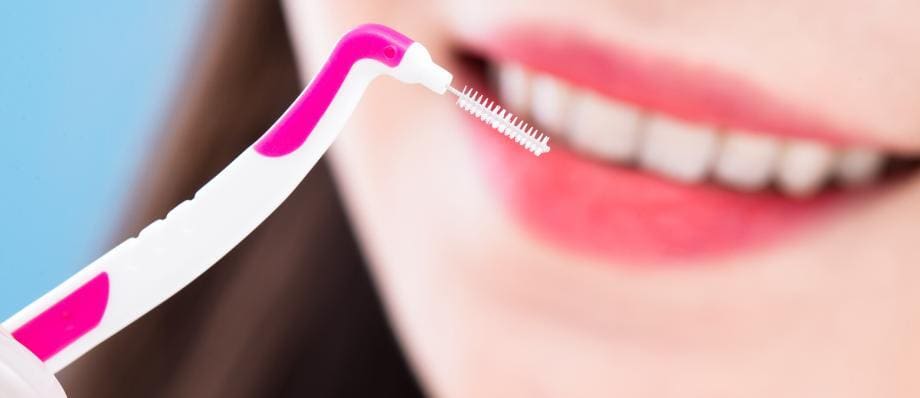Oral health is a vital component of our overall well-being. Maintaining healthy teeth and gums not only ensures a beautiful smile but also plays a significant role in preventing various oral diseases and promoting general health. One of the often-neglected aspects of oral hygiene is interdental cleaning, which focuses on the spaces between teeth. Traditional toothbrushes and floss alone may not be sufficient to effectively clean these interdental areas. This is where interdental brush comes into play. In this comprehensive article, we will explore the significance, types, proper usage, and benefits of interdental brushes in promoting optimal oral health.
The Importance of Interdental Cleaning
Toothbrushes have long been a staple in our oral hygiene routine, and dental floss is commonly used to clean between teeth. However, there are limitations to both of these tools when it comes to effectively cleaning interdental spaces. These spaces, known as interdental or interproximal areas, are where many oral health issues can originate.
Plaque and Food Debris
Plaque, a sticky film of bacteria that forms on our teeth, can accumulate between teeth if not removed effectively. Inadequate cleaning can lead to plaque buildup, which is a primary cause of dental problems like cavities and gum disease. Additionally, food particles can become lodged in these spaces, providing a food source for bacteria and contributing to bad breath.
Gum Health
Improper interdental cleaning can also affect the health of the gums. Accumulated plaque and food debris can irritate the gums, leading to inflammation and gingivitis. If left untreated, gingivitis can progress to periodontitis, a severe gum disease that can result in tooth loss and other health issues.
The Link to Systemic Health
Research has shown that there is a connection between oral health and systemic health. Poor oral hygiene can contribute to various health problems, including heart disease, diabetes, and respiratory issues. Effective interdental cleaning is a crucial step in preventing these systemic health issues.
Types of Interdental Brush
Interdental brush comes in various forms, each designed to cater to different interdental spaces and individual preferences. The following are some common types of interdental brushes:
- Soft Picks
- Dental Tape
- Proxabrush
- Dental Floss
- Rubber Tip Stimulators
Soft Picks
Soft picks, are small, conical brushes designed to fit between teeth. They have flexible bristles and come in various sizes to accommodate different interdental spaces. These brushes are easy to use and provide a comfortable option for interdental cleaning.
Dental Tape
Dental tape is a flat, ribbon-like tool that can be used to clean between teeth. It is often preferred by individuals with tight interdental spaces or those who find traditional dental floss uncomfortable.
Proxabrush
Proxabrushes, resemble small pipe cleaners with bristles. They are particularly useful for individuals with larger interdental spaces and are designed for efficient plaque removal between teeth.
Dental Floss
Dental floss remains a classic tool for interdental cleaning. It comes in various forms, including traditional floss, dental tape, and floss picks. When used correctly, dental floss can be effective in removing plaque and food particles from between teeth.
Rubber Tip Stimulators
Rubber tip stimulators are another interdental tool that promotes gum health. They have a conical rubber tip that can be used to massage and stimulate the gums while removing debris from interdental spaces.
How to Use Interdental Brush
To reap the maximum benefits from interdental brush, it is essential to use them correctly. Here’s a step-by-step guide on how to effectively use interdental brushes:
- Choose the Right Size
- Insert Gently
- Angle Matters
- Be Systematic
- Rinse and Repeat
- Flossing and Brushing
Choose the Right Size
Select an interdental brush size that fits comfortably between your teeth without causing discomfort or pain. It’s essential to have a variety of sizes available to accommodate different interdental spaces.
Insert Gently
Insert the interdental brush between your teeth without forcing it. Apply gentle pressure, moving it back and forth to ensure you clean all surfaces. Avoid aggressive movements that could damage your gums.
Angle Matters
Hold the interdental brush at a slight angle to your teeth, ensuring the bristles make contact with the tooth and gum surfaces. This angle helps in effectively removing plaque and debris.
Be Systematic
Work your way through your entire mouth, cleaning between each pair of adjacent teeth. Don’t forget the back teeth and molars, as these areas are often overlooked but can be prone to plaque buildup.
Rinse and Repeat
After cleaning between each set of teeth, rinse the interdental brush and repeat the process until you’ve thoroughly cleaned all interdental spaces. Dispose of the brush when it becomes worn or the bristles fray.
Flossing and Brushing
Remember that interdental brushes are a complement to your regular toothbrush and dental floss, not a replacement. Continue brushing your teeth twice a day and flossing daily to maintain comprehensive oral hygiene.
The Benefits of Interdental Brush
Interdental brushes offer several significant benefits in the realm of oral health:
- Improved Plaque Removal
- Better Gum Health
- Enhanced Breath Freshness
- Prevention of Systemic Health Issues
- Customization
- Easy Accessibility
Improved Plaque Removal
Interdental brushes are highly effective at removing plaque from the areas between teeth. This reduces the risk of tooth decay and gum disease, as well as the development of bad breath.
Better Gum Health
Proper interdental cleaning can prevent gum inflammation and gingivitis, leading to healthier and more resilient gums. This can also help reduce the risk of gum recession and tooth mobility.
Enhanced Breath Freshness
The removal of food debris and bacteria from between teeth contributes to fresher breath. This is especially important in social and professional settings.
Prevention of Systemic Health Issues
Maintaining good oral hygiene with the help of interdental brush can contribute to better overall health by reducing the risk of systemic health issues linked to poor oral health.
Customization
Interdental brushes come in various sizes and designs to accommodate different interdental spaces and individual preferences. This allows for a customized approach to interdental cleaning.
Easy Accessibility
Interdental brushes are widely available at most drugstores and can be purchased online. They are affordable and easy to find, making them accessible for everyone.
Tips for Interdental Brush Usage
Here are some additional tips to make the most of your interdental brush:
- Consult a Dentist
- Gentle Is Key
- Regular Replacement
- Follow a Routine
- Be Patient
- Travel-Friendly
- Combining Techniques
Consult a Dentist
Before incorporating interdental brushes into your oral hygiene routine, it’s a good idea to consult your dentist. They can recommend the most suitable type and size for your specific needs.
Gentle Is Key
Use gentle but effective strokes when cleaning between teeth. Excessive force can lead to gum damage and discomfort.
Regular Replacement
Interdental brush should be replaced when the bristles become worn or frayed. Regularly inspect your brushes to ensure they are still effective.
Follow a Routine
Establish a daily interdental cleaning routine, ideally in the evening, to ensure that you don’t skip this essential step in oral care.
Be Patient
Using interdental brush may be unfamiliar to some individuals at first, and it may take a bit of practice to become comfortable and proficient in their use. Be patient and persistent as you integrate interdental cleaning into your daily regimen.
Travel-Friendly
Interdental brushes are compact and easily portable, making them an ideal travel companion. Don’t neglect your oral hygiene routine when you’re away from home. Keep a few interdental brushes in your travel toiletry kit to maintain proper interdental cleaning.
Combining Techniques
It’s worth noting that using multiple interdental tools can be beneficial. For example, some people find that a combination of interdental brushes and dental floss provides a more comprehensive clean. Experiment with different tools to find the most effective combination for your unique oral care needs.
Addressing Common Concerns
There are a few common concerns and misconceptions associated with interdental brush that we need to address:
- Pain or Discomfort
- Bleeding Gums
- Interdental Brush Size
- Time Consuming
- Cost
Pain or Discomfort
Some people may experience mild discomfort or sensitivity when first using interdental brushes. This is usually due to the gums being unaccustomed to the sensation. With time and practice, this discomfort typically subsides.
Bleeding Gums
Bleeding gums when using interdental brush may occur if you have gum inflammation or gingivitis. This is a sign that you need to be more diligent about your oral hygiene routine, but it’s not a reason to stop using interdental brush. In fact, using them correctly can help reduce bleeding and gum inflammation over time.
Interdental Brush Size
The right size of the interdental brush is crucial for effective cleaning. If you’re unsure about which size to use, consult your dentist or dental hygienist. They can provide recommendations based on your specific needs.
Time Consuming
Some individuals might perceive interdental cleaning as time-consuming. However, it’s a relatively quick process that can be accomplished within a few minutes once you become accustomed to using interdental brush.
Cost
While interdental brushes may seem like an additional expense, the long-term benefits they provide in terms of oral health and reduced dental problems can potentially save you money on dental treatments and visits in the future.
Conclusion
Interdental brushes are indispensable tools in maintaining optimal oral health. They address the crucial task of cleaning between teeth and removing plaque and debris from interdental spaces, helping to prevent cavities, gum disease, bad breath, and even systemic health issues. These versatile tools come in various forms, allowing individuals to customize their interdental cleaning routine to suit their specific needs.
While interdental brushes may not replace the conventional toothbrush and dental floss, they are an essential addition to a comprehensive oral hygiene regimen. Using them correctly and consistently can improve gum health, promote fresher breath, and contribute to better overall health.
Don’t forget to consult your dentist or dental hygienist for guidance on the best interdental brush size and type for your unique oral care needs. By incorporating interdental brushes into your daily oral hygiene routine and following best practices for usage, you can enjoy the numerous benefits they offer and maintain a healthy and beautiful smile.





